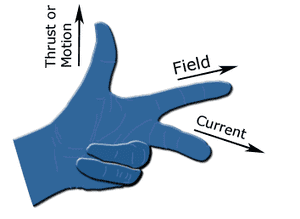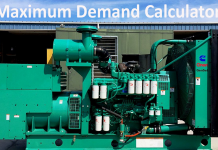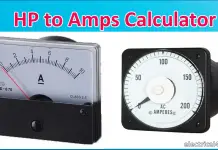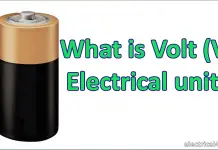Fleming Left hand rule:
When Current carrying a conductor is kept in a magnetic field which experience force, The direction of the force is perpendicular to both the directions of the current and the magnetic field. The mechanical force, magnetic field and electrical current are mutually perpendicular.
Fleming’s left-hand rule for motors is one of a pair of visual mnemonics, the other being Fleming’s right-hand rule (for generators). They were originated by John Ambrose Fleming, in the late 19th century, as a simple way of working out the direction of motion in an electric motor, or the direction of electric current in an electric generator.
A left hand can be held, as shown in the picture, consider three fingers from your left hands such as thumb, first finger and second finger; Each finger assigns in the same order such as Force, Magnetic field, and direction of the electrical current.
[wp_ad_camp_1]
Easy to remember Fleming Left-hand rule:
Fleming left-hand rule can be easily remembered by the word left. In a word “left” contains a letter “f” f is the starting letter of force. The force can be delivered by a motor. By that, you can remember the Fleming left-hand rule.
First finger => B;
Second finger => I
Thumb => F;
Key Points:
- Fleming right-hand rule gives the direction of the Force (conductor’s motion).
- The same rule is used in Motor.
Fleming’s left-hand rule is used for electric motors, while Fleming’s right-hand rule is used for electric generators.
Simple easy to understand:
In many application, the motor is used as the generator and the generator is used as the motor. Example: Car generator, DC Motor, railway traction system, A centrifugal machine etc.
How?
To illustrate how to consider that many types of electric machine can be used as motor as well as the generator. Motoring action is used to accelerate a vehicle but applying a battery voltage across the machine. If the motor is then disconnected from the charged battery, and connected instead to a completely flat battery, the vehicle will decelerate. The motor will act as a generator and convert the vehicle’s kinetic energy back to electrical energy, which is then stored in the battery. Since neither the direction of motion nor the direction of the magnetic field (inside the motor/generator) has changed, the direction of the electric current in the motor/generator has reversed.
[wp_ad_camp_1]
Conclusion:
In an electric machine, the electric current and magnetic field present means they create the force (movement or motion) => Fleming left-hand rule
In the same machine, the motion (developed externally such as the turbine or diesel engine or vehicle’s kinetic energy) and magnetic field presents mean they lead to creating of electrical current.













![What is Arc Chute? Types, Working Principle [Video Included] arc chute working priciple](https://electrical4u.net/wp-content/uploads/2020/06/arc-chute-218x150.png)